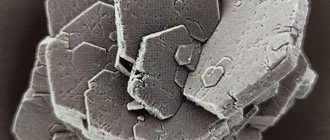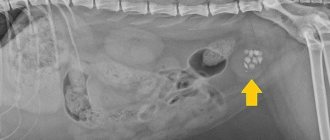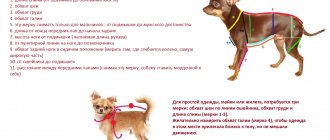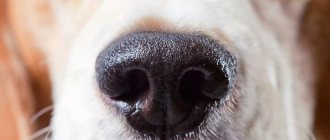Leptospirosis is an anthropozoonotic multisystem disease. It affects almost the entire body: liver and kidneys, lungs, spleen, anterior chamber of the eye, retina, cardiac and skeletal muscles, meninges, genitals and pancreas. In addition, it inhibits blood clotting. The development of the disease in dogs does not depend on age, gender or breed. But young individuals are most susceptible to the disease.
Description of the disease
Leptospirosis or infectious jaundice, or Weil's disease, is an infectious disease caused by the bacterium Leptospira. Distributed almost throughout the world (except Antarctica), affecting most species of mammals. More than 200 species and subspecies of the pathogenic bacterium Leptospira (called serotypes or serogroups) are known to veterinary medicine. But more than 50% of them do not cause pathologies.
Important! Leptospira bacteria are close “relatives” of borreliosis and syphilis.
The infection is resistant to low temperatures and can remain viable and virulent for many months. Even if the ambient temperature drops to -70 degrees. An increase in ambient temperature combined with an increased level of humidity is a favorable environment for maintaining life activity for up to a year and a half. Most often found in stagnant bodies of water, with a large accumulation of Leptospira bacteria, a visible film can form on the surface of the water.
In water it can remain active for 30 days, under favorable conditions. In running water no more than 10 days. In soil with high humidity, Leptospires remain virulent for up to 300 days.
Bacteria are susceptible to drying out and changes in pH. When the temperature rises to 76 degrees and above, the infection dies instantly.
Routes of infection
The main routes of infection with leptospirosis:
- Contact. Infection occurs through contact of mucous membranes or damaged skin with contaminated soil, water, sick animals or their secretions.
- Nutritional. Infection occurs by the bacteria entering the stomach - quenching thirst from infected bodies of water, eating raw meat of leptospirosis carriers or contaminated (infected animals) products.
Important! Dogs can shed Leptospira in their urine without showing clinical signs.
Carriers of leptospirosis are most often rodents and small predators that eat them:
- Rats;
- Hedgehogs;
- Shrews;
- The bats;
- Voles;
- Nutria;
- Ferrets;
- Martens;
- Arctic foxes;
- Foxes.
This is not the entire list of potential carriers of leptospirosis. Almost all mammals are susceptible to the disease, including cattle, artiodactyls, and almost all canines. Remarkably, cats are the least likely to get sick.
The causative agent of infection
Dogs are not the only ones susceptible to leptospirosis. Farm animals - sheep, pigs, cows, goats, fur-bearing animals and even poultry - are susceptible to infection.
Remember! Leptospirosis is transmitted from dogs to humans.
The causative agent of the disease is a pathogenic bacterial microorganism of the genus Leptospira, a class of spirochetes. Leptospirosis bacteria are closely related to Treponema pallidum, which causes the development of syphilis.
The spirochete family has increased resistance to aggressive environmental factors. Low temperatures and even freezing are not able to inactivate the causative agent of leptospirosis.
The most favorable conditions for the growth of Leptospira are temperatures above 34°C and high air humidity.
Under direct ultraviolet rays and a temperature of 75°C, leptospira die after 2 hours. Chemical disinfectant solutions of caustic soda, phenol and formaldehyde are used to disinfect the premises and care items for a dog with leptospirosis.
A healthy dog becomes infected through direct contact with an infected carrier of the disease. Leptospirosis bacteria are excreted along with urine, and once in a favorable environment they begin to actively multiply. The main route of transmission of leptospirosis is nutritional, through contaminated drinking water (stagnant water in puddles and reservoirs).
Symptoms and signs in dogs
The disease has a huge number of clinical signs, as it affects almost all internal organs, nervous and circulatory systems, and skeletal muscles . American doctors have nicknamed leptospirosis the chameleon disease, because due to the number of symptoms, leptospirosis can be confused with canine distemper or infectious hepatitis.
Main symptoms and signs of leptospirosis:
- Apathetic state, inactivity;
- Refusal to eat;
- Redness or yellowing of mucous membranes;
- Vomit;
- Diarrhea, other signs of gastrointestinal disorders;
- Blood in the urine, dark urine;
- Poor urination, decreased amount of urine;
- Stomatitis;
- Increased body temperature;
- Deterioration of blood clotting;
- Lameness, loss of coordination;
- Shortness of breath, rapid pulse;
- Wheezing when breathing;
- Yellowness of the epithelium and mucous membranes;
- Dehydration;
- Abdominal pain;
- Anorexia.
Most often, symptoms appear 4–9 days after infection. Signs of leptospirosis may vary depending on which organs are affected. All organs may be affected, in which case the symptoms will be extensive. But the greatest danger this disease poses is that the symptoms are not always pronounced; it all depends on the individual characteristics of the body.
After entering the body, the easiest way for Leptospira bacteria to penetrate is the kidneys; therefore, the first clinical signs are associated with urination. Then the functioning of the liver, gastrointestinal tract, and spleen is disrupted. Also, the walls of blood vessels are destroyed, the functioning of the circulatory system is disrupted, which leads to internal bleeding.
Important! Animals that have recovered from the disease remain carriers of Leptospira for a long time.
Pathogenesis
After entering the body, leptospira penetrates the bloodstream and spreads to all organs. Their active reproduction causes an increase in temperature. On days 3-5, lysing antibodies are produced, so the pathogen disappears from the blood. They break down, releasing endotoxin. Under its influence, cells of parenchymal organs and blood are destroyed.
Anemia develops due to a decrease in the number of red blood cells. Free hemoglobin accumulates, from which bilirubin is formed. It does not bind to glucuronic acid, as it should normally, but is adsorbed by tissues, turning them yellow.
At the same time, the filtration capacity of the kidneys is impaired, so red blood cells and hemoglobin are found in the urine. The endothelium of the capillaries of organs is affected and hemorrhages develop. The intoxication phase ends with death or recovery. But even in recovered individuals, leptospira persist and multiply in the convoluted tubules of the kidneys for a long time. Therefore, they pose a danger as a source of infection.
Forms of leptospirosis
Leptospirosis in dogs is divided into 3 forms - chronic, hemorrhagic and icteric. The symptoms depend on the form of the disease. The state of the dog’s immune system determines the nature of the disease.
Chronic
The disease enters the chronic phase if the dog has managed to get sick from other types of leptospirosis. The chronic form lasts several years, and with a decrease in immunity or concomitant diseases it reappears. Diagnosed quite rarely.
Symptoms of chronic leptospirosis:
- Anorexia, loss of weight and appetite;
- Pallor of mucous membranes;
- Enlarged lymph nodes;
- Epithelial necrosis;
- Hard breath;
- Apathetic state;
- Cardiopalmus;
- Lack of estrus in females and sexual desire in males;
- Stillbirth (loss of fetuses in females).
Hemorrhagic
The anicteric phase of leptospirosis occurs most often in fully formed individuals. The duration of the acute hemorrhagic phase is up to 7 days . If treatment is untimely or incorrect, death occurs in 70% of cases, or the disease progresses to the chronic stage.
The Leptospira bacterium in the hemorrhagic form of the disease primarily affects the circulatory system. Based on this, the clinical signs are:
- A sharp increase in body temperature to 41 degrees or more;
- Increased thirst;
- “Marbled” mucous membranes (bright red pigment of the mucous membranes interspersed with pale pink and white);
- Refusal to eat;
- Lethargy, inactivity;
- Diarrhea;
- Vomit;
- Dehydration;
- Cramps.
After 3–4 days, the body temperature drops to normal or lower. Blood impurities are clearly visible in the vomit and stool. Within 2–3 days, with a probability of more than 80%, the dog can no longer be saved. The animal will die from dehydration or internal bleeding.
Jaundice
A form of leptospirosis, called icteric, is diagnosed more often in dogs with immature immunity, under the age of two years. The acute course of the icteric phase lasts up to 7 days , the mortality rate is about 65%.
The symptoms are similar to hemorrhagic . The main difference between the two phases is the pigmentation of the mucous membranes; during the icteric phase, the mucous membranes of the mouth, eyes and the upper layer of the epithelium become yellow. This is due to the fact that the Leptospira bacterium is localized in the liver. Leads to increased levels of bilirubin in the blood, which in turn gives a yellow tint.
Death occurs from intoxication of the body.
How and with what to treat
Leptospirosis is a life-threatening disease, so entrust treatment to specialists in a hospital setting. If you live in an area unfavorable for the disease, are fond of hunting, or travel with a pet, take care of yourself and get vaccinated.
In the first days of the disease, the dog can be given medications intramuscularly or subcutaneously. In the future, local blood circulation is impaired and medications from the injection sites will be poorly absorbed into the blood. Therefore, intravenous drip administration of drugs is preferred. Leptospira live in the renal tubules, which are poorly supplied with blood. Therefore, antibiotic therapy does not always lead to the expected result.
The therapeutic strategy for the treatment of leptospirosis in dogs is developing in the following areas:
- Destruction of the pathogen. In the first days of the disease, hyperimmune serum is administered for 3 days in a row. At the first stage, long-acting antibiotics of the cephalosporin or penicillin series are effective. If the disease has transformed into a chronic form, treatment is continued with other antiseptics. Tetracyclines destroy Leptospira, however, they are characterized by side effects - they interfere with the restoration of local blood flow. Bicillin 3 or 5 injections, practiced in previous years, are ineffective due to impaired local circulation. At the same time, immunocorrectors are administered - Polyoxidonium, Lykopid, Ribotan, Gamavit.
For leptospirosis, intravenous administration of medications is indicated. - Fight dehydration. The onset of the disease is characterized by thirst. Subsequently, debilitating vomiting develops. The dog swallows the water and immediately vomits it. In order for the animal to drink, regurgitation is stopped by parenteral administration of Metoclopomide (Cerucal). Osmoprotective salts are administered dropwise:
- Ringer-Locke solution with glucose;
- Reopoliglyukin;
- Lactosol.
Hemodez;
When the dog is able to drink, diarrhea is stopped by oral administration of sorbents - Enterosgel, Smecta, Polyphepam.
Hill's k/d veterinary food is prescribed to animals with kidney and heart disease.
They contain protein hydrolysates and dried chicken eggs. They are distinguished by a low concentration of complete, easily digestible proteins and high calorie content. One jar contains a daily portion for a pet weighing 30 kg. Please note that once opened, canned food must be fed within 36 hours or less. If you have a small dog, buy Hills k/d granules and soak them for the first time. The duration of diet therapy is determined by the doctor. A 370 g can of canned food costs 261 rubles, a 2 kg package of dry granules costs 1517 rubles.
Diagnostic methods
The main carrier of Leptospira is blood, or rather the antibodies produced by the body against the bacterium. Antibodies can be detected as early as 10 days after infection. Leptospira can then be detected in urine. Therefore, blood and urine collection are an exceptional condition for the correct diagnosis of leptospirosis.
Important! Blood and urine tests provide a more plausible picture before introducing antibiotics into a dog's body, regardless of the duration of symptoms.
Test for leptospirosis in dogs
The microagglutination test, a serological blood test, is the most widely used diagnostic test for leptospirosis. But it must be carried out in conjunction with urine tests, and the procedure must be repeated after 2–3 days . Since in the initial stages the number of antibodies to Leptospira may be “within normal limits” (1:100 and even 1:200 is considered normal in regions that do not have outbreaks of epidemics). Also, the results are highly dependent on the quality control of the laboratory.
Can a dog be protected from leptospirosis?
It is possible if you vaccinate your animal against leptospirosis annually. There are domestic and foreign mono- or polyvaccines (Biovac-L, Multikan-6, etc.). To do this, the dog owner just needs to call the RosVet VC by phone + 7 (495) 256-11-11, around the clock , express to the administrator your wish for vaccination and make an appointment with a doctor at a convenient time.
Be sure to follow the rules for keeping your pet, protect it from risk factors, carefully inspect it after walks for ticks, and do not let it drink standing water.
Treatment
Treating leptospirosis at home, self-diagnosis and self-medication is prohibited! Treatment is prescribed only by a qualified veterinarian and only after laboratory tests. In this case, the likelihood of positive dynamics during therapy increases.
Treatment requires comprehensive treatment, aimed primarily at destroying the Leptospira bacterium itself. It is also necessary to restore the body, remove intoxication and normalize the functioning of the affected internal organs.
In addition to drug treatment, the dog must be prescribed a diet. Food should only be of high quality, low in fat and protein. Drinking plenty of fluids and eating small meals is prescribed.
List of drugs
| Intramuscularly | ||
| Name | Price | Application |
| Hyperimmune serum against leptospirosis | 424 rubles | 0.5 ml per 1 kg of body weight; 1 time per day 2 – 3 days |
| Streptomycin | 21 ruble | 10-15 units/kg 2 times a day for a course of 5 days. |
| Hemodez | 45 rubles | 10 ml/kg once or twice a day |
| Oral | ||
| Name | Price | Application |
| Lycopid | 250 rubles | 0.5 mg per 3 kg of body weight once a day for 10 days. |
| Thiotriazolin | 525 rubles | up to 10 kg – ½ table. 2 times a day, up to 20 kg – 1 tablet. 2 times a day, more than 20 kg – 1 tablet. 3 times a day |
| Cordiamine | 70 rubles | Up to 3 drops on the root of the tongue |
| Enterosgel | 400 rubles | up to 2 tbsp. dissolve the gel in 200 ml of water, pour into the mouth |
| Hepatovet | 620 rubles | 2-3 ml of suspension for every 10 kg of weight. Divided into 2-3 doses |
The dog is sick - what to look for
The main signs of leptospirosis are determined by the sequence of spread of spirochetes throughout the animal's body. First, spirochetes enter the hepatic system and the liver itself, and it is there that they begin to reproduce, further spreading throughout the body through the bloodstream.
- In the first days of infection, the usually active and frolicking pet becomes lethargic and inactive. The contrast in the change in behavior cannot but be noticed by the owner.
- Body temperature rises sharply (up to 41-42°C).
- During the first 4-7 days after infection, rapid breathing is observed (up to 35-40 breath movements/min) and the heartbeat accelerates (up to 200 beats/min). Heart failure progresses.
- Bloody diarrhea and vomiting appear. There are also blood impurities in the vomit (leptospires practically “riddle” the blood vessels, provoking internal bleeding of varying intensity). After a few days, diarrhea can turn into constipation due to dehydration.
- The mouth begins to smell unpleasant (smelly ammonia smell), the mucous membrane of the mouth may clearly turn yellow. The conjunctiva and white of the eye also turn yellow. Small purulent ulcers may appear, which at first glance are perceived as microtraumas or scratches.
- Weeping spots appear on the nasal planum, which dry out, and dying areas form under them. It seems that the dog’s nose is “crumbling” into small pieces.
- Before yellowing of the mucous membranes, their pronounced pallor may be observed against the background of anemia.
- On the surface of the skin and fur there is an accumulation of plaque with a sharply unpleasant odor.
- The pet stops drinking, and the urine turns brown. Its amount decreases to the level of complete absence of urination. Dehydration appears (dry mucous membranes, lack of saliva, skin folds do not straighten out). These are all signs of severe renal failure.
- As the disease progresses, breathing becomes heavy, hoarse and gurgling.
- Sometimes there are convulsions.
- After a week or a week and a half, due to exhaustion, body temperature usually drops below normal (up to 37°C). Usually, in this condition, few specialists undertake to treat a dog.
When infected with leptospirosis, all of the listed signs may appear, only some in an arbitrary combination, and in some cases an asymptomatic course may be observed.
Possible consequences
Dioxycycline, a broad-spectrum antibiotic, is also used as part of combination therapy. It has established itself as a drug with positive dynamics against gram-negative microorganisms (including Leptospira bacteria). Apply orally 1 time per day, 10 mg per 1 kg of dog weight. The price of the drug is 30 rubles for 10 capsules.
Leptospirosis in dogs is a serious disease, the consequences of which are sometimes irreversible. After long-term treatment, restorative therapy is often prescribed. Which is aimed at avoiding the consequences of the disease. Dogs that have had leptospirosis experience:
- Liver dysfunction;
- Chronic diseases of the kidneys and adrenal glands;
- Disturbances in the gastrointestinal tract;
- Lesions of the visual organs;
- Disorders of the cardiovascular system;
- Inflammatory processes of the respiratory tract;
- Complete or partial paralysis.
Dogs that have recovered from Weill's disease remain carriers of the infection for several years. But those who have suffered the disease themselves develop lasting, lifelong immunity.
Complications and prognosis
Due to the severe impact on the body, complications often occur even in cured animals. These include:
- pneumonia
– inflammation of the lung tissue;
- meningoencephalitis
– inflammation of the brain, fraught with the development of complete or incomplete paralysis;
- cirrhosis of the liver
– irreversible replacement of healthy tissues with fibrous ones;
- renal failure
– impairment of all kidney functions.
The likelihood of complications increases as the disease progresses. Because of this, not all veterinarians agree to take on severely advanced cases.
A favorable prognosis is given only with timely treatment. Also, the chances of recovery increase in animals that are not at risk.
Prevention
To avoid infection with infectious jaundice, it is necessary to observe basic hygiene standards. Dogs in crowded conditions (kennels, pet hotels, shelters) are at increased risk. Also pets that often come into contact with cattle. Hunting dogs and others that eat small rodents and quench their thirst in stagnant bodies of water.
Prevention of leptospirosis includes keeping animal areas clean. Exclusion from the diet of small rodents and wild animals (potential carriers of the bacteria). Prohibition on drinking from puddles and other sources of stagnant bodies of water (while walking, carry clean drinking water with you not only for yourself, but also for the dog).
Serums against leptospirosis
Dog vaccination is the main and most effective prevention against leptospirosis. Immunization against viral infections is carried out with a complex serum that includes Leptospira strains.
The most popular vaccines against leptospirosis with average clinic prices:
- Vanguard , 1200 rubles;
- Multikan-6, multikan-8, 800 rubles;
- Nobivak , 1300 rubles;
- Biocan , 1100 rubles.
The first immunization is carried out at the age of approximately 8 weeks, after 21 days a revaccination is required. The next time the serum is administered at one year of age, then duplicated annually until the end of the dog’s life.
A veterinarian in areas unfavorable for leptospirosis may prescribe immunization more often than once a year (once every 6–9 months, depending on epidemic outbreaks). The picture is the same for hunting dogs; the veterinarian may recommend administering the serum more often than other pets.
Etiology
The causative agent is a bacterium from the genus Spirochaetaceae, which lives and reproduces in stagnant water, as well as in the thickness of bottom silty sediments. Afraid of drying and sunlight. Resistant to freezing. Able to penetrate through scratches, intact skin, mouth, eyes, mucous membranes.
The reservoir of infection is rodents, as well as recovered animals. They acquire lifelong immunity, but remain leptospiron carriers for 3 years after infection. The incubation period lasts from 2 to 12 days. The peak incidence occurs at the end of summer or beginning of autumn.
A dog gets the pathogen by drinking from a puddle or pond of water or coming into contact with the feces of rodents or relatives. Infection through contaminated food is possible. Hunting dogs are at particular risk. An unbalanced diet contributes to the development of symptoms of the disease.
Leptospira live in puddles
Puppies become infected in utero, suffer severe illness and, as a rule, die.
Is the disease dangerous for humans?
Almost all mammals on the planet suffer from leptospirosis; unfortunately, humans are no exception. Therefore, preventive measures for dogs should be taken more than seriously. After all, this is fraught not only with the death of the pet, but also with a deterioration in the health of the owner.
If clinical signs of leptospirosis are detected in a dog, the owner must carefully observe safety measures. It is best if the animal is placed in a hospital hospital. But if this is not possible, then it is very important:
- Avoid contact of a sick dog with children and other animals;
- During treatment, avoid contact of any kind of dog secretions with human skin and mucous membranes;
- All types of procedures with animals should be carried out with rubber gloves and thick clothing;
- Carry out sanitary treatment of the entire house, and, if possible, daily disinfection of the room in which the sick dog is kept;
- Minimize contact with an infected pet, do not allow licking of the face and hands;
- After each manipulation with an infected dog, be sure to wash your hands with soap and water, above the elbows. Even if gloves were used.
For both dogs and humans, serum against leptospirosis can be administered. Vaccination against infectious jaundice can be given to people starting at the age of seven. For persons who have constant contact with animals, immunization against leptospirosis is recommended by doctors.
What to do at home
All home remedies are powerless against leptospirosis. Only treatment prescribed by a specialist can save a dog. The owner is required to create the most comfortable conditions for the four-legged pet, peace and good nutrition.
Since the animal is a source of infection, it should be kept in a separate room, and it should be cared for using precautions (use a change of clothes and gloves). The places where the animal defecated are washed using bleach and disinfectants with the addition of iodine.
Weakened animals, as a rule, refuse to eat, but there is no need to force feed. During treatment, the dog's diet consists of dietary dishes low in protein.
When the pet begins to recover, it should also consume exclusively gentle foods that eliminate the burden on the liver and other organs damaged during the illness. The dog will follow this diet for the rest of its life.
It is preferable to use special medicated food, which can be purchased at a veterinary clinic. If the dog is fed natural food, then the diet should include boiled chicken or turkey, oatmeal and rice porridge cooked in water, vegetables, fruits (if there are no exacerbations of gastroenteritis).
The dog should receive the required amount of water, to which a decoction of the choleretic herb should be added.
Sources of infection
Healthy dogs can become infected with leptospirosis by drinking water from puddles or picking up food from the ground. Unpleasant consequences can result from contact with objects on which sick animals have left saliva or urine. Swimming in lakes and ponds threatens the migration of Leptospira from the water into the dog's body. Veterinarians do not rule out the possibility of infection through flea and tick bites.
The infection penetrates through damaged mucous membranes, ulcers of any nature on the body or in the gastrointestinal tract. Sexual transmission and infection through the respiratory system are not excluded. There are vaccines against canine leptospirosis , but they do not completely prevent the possibility of infection.
The likelihood of illness is higher in dogs with impaired immune systems, kept in crowded conditions, without sanitary standards. Stray animals that are poorly fed and come into contact with rodents are often infected. Dogs living in rural areas have a higher chance of getting sick than urban dogs.
Infection consists of 2 stages: bacteremic and toxic. At the first stage, leptospira enters the blood, multiplies and spreads throughout the circulatory system, penetrating the liver, kidneys and other parenchymal organs.
The onset of the second stage is characterized by lysis (disintegration) of Leptospira with the formation of endotoxins. The main target of toxins is vascular epithelial cells. As a result, the integrity of the capillaries is compromised. Local bleeding begins, characteristic of leptospirosis.
Toxins secreted by leptospira destroy small vessels of internal organs. Areas of necrosis appear in the kidneys, fatty degeneration begins in the liver, and hemorrhages occur in the spleen. Signs of jaundice appear.
Yellowed mucous membranes of the mouth and eyes indicate infection with leptospirosis
About a week after infection, a sick dog begins to spread leptospira through urine and saliva, becoming a source of infection. The release of pathogenic bacteria can last for several weeks or several years after the animal has completely recovered. Therefore, the dog needs to be isolated.
When caring for infected puppies and dogs, you must take precautions: use gloves, disinfect objects, tools where blood or dog secretions could get in. The owner of the animal must monitor his own condition. If you feel unwell, consult a doctor.
Question answer
Is it possible to vaccinate a dog against leptospirosis?
Not only is it possible, but it is necessary! Vaccination against leptospirosis is done twice a year. The very first is done at the age of 8-9 weeks from birth, repeated after 3-4 weeks. Then annually according to a similar scheme (vaccination - revaccination after 21-28 days). A strong immunity is developed that protects the pet from infection and/or severe clinical manifestations of the disease in case of infection.
Is it possible to cure leptospirosis in a dog without consequences?
Unlikely. The disease greatly affects the immunity and functions of almost all organs and systems, often leading to the death of the animal. If it is still possible to cure your pet, then carriage of the bacteria can last for several years. Some functions of the excretory system, respiratory, cardiovascular and hepatobiliary can be impaired for life.
The main signs of leptospirosis: how to understand that your pet is sick?
The owner should definitely be alerted to: sudden lethargy of the family friend, very high temperature (up to 42°C), difficulty urinating, darkening of urine and a yellow tint to the mucous membranes or skin (on hairless areas of the body).
What tests are taken to diagnose leptospirosis?
To confirm or refute the diagnosis of leptospirosis, it is necessary to take urine and blood tests. They will look for antibodies to the pathogen in the blood, and the pathogens themselves in the urine.
The main causes of leptospirosis infection
Contact with yard dogs, drinking from puddles, failure to comply with sanitary and hygienic requirements for keeping animals in houses and apartments, and refusal to vaccinate significantly increase the risk of contracting leptospirosis.
Diagnosis confirmation
The diagnosis is confirmed only by laboratory tests for leptospirosis, despite the obvious clinical picture, which a good specialist will leave no doubt about.
Blood and urine are collected for laboratory tests. In exceptional cases, discharge from the genitals may be taken. Posthumously, during an autopsy, the liver, fluid from the peritoneum and chest, and kidneys are examined.
Fresh urine is subjected to microscopy (examined under a microscope) and cultures are carried out on special laboratory media, i.e. detect living pathogens. The same is done with samples of genital secretions.
They do not look for spirochetes in the blood; here it is important to detect antibodies to this bacterium. The study is carried out twice with an interval of 1 week. With leptospirosis, the number of detected antibodies increases tenfold.











